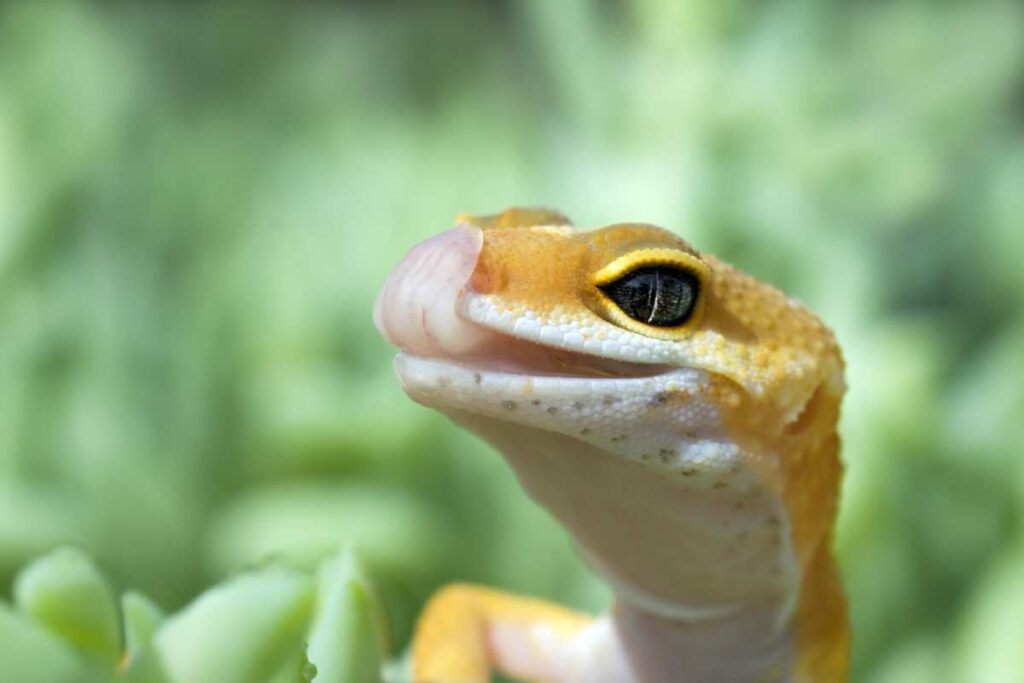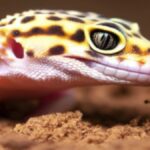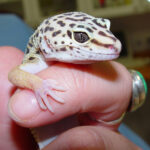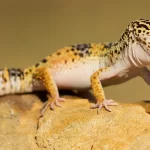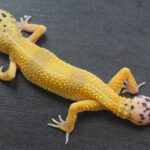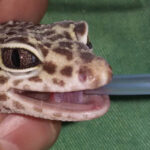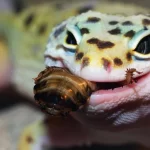Tongue flicking (or licking) behaviour is frequently seen in Leopard geckos. Unlike, for example Chameleons, Leopard geckos do not have long, projectile tongues to catch prey from a distance, but they do use them in similar ways.
Introduction to tongue flicking behaviour in Leopard geckos
Apart from using the tongue to catch prey, licking behaviour is actually an additional way for Leopard geckos to smell and/or taste. Leopard geckos also don’t lick things per se, but rather flick their tongues into the air at frequent intervals before retracting them back into the mouth.
By licking, Leopard geckos are actually ‘smelling’ and “tasting” their environments. This enables Leopard geckos to get a better understanding of their environment during hunting, hiding, mate-seeking and breeding.
Jacobson’s organ
After each ‘lick’, microscopic particles from the environment collects on the surface of the Leopard gecko’s tongue. After the tongue is pulled back into the mouth it is pushed into an opening on the upper part of the mouth. This opening is connected to a sensory part called the Jacobson’s organ or the vomeronasal organ. By pushing the tongue onto the Jacobson’s organ, the particles from the environment can be deciphered into messages (similar to the taste buds and the inside of human noses). These messages are then transmitted from the Jacobson’s organ via nerves to the brain of the Leopard gecko. After the information has been received from the Jacobson’s organ, the brain makes the reptile ‘understand’ its environment better.
Using the tongue to be able to ‘smell’ and ‘taste’ is not unique to Leopard geckos. Most other reptiles and many other animals also has this ability.
This image shows the Jacobson’s organ of a snake, which is very similar in reptiles including Leopard geckos. Image credit Fred the Oyster (CC BY-SA 4.0)
It is currently believed that in many animals, the vomeronasal organ is responsible for detecting pheromones, aiding in reproduction and social behaviour.

